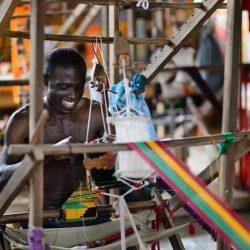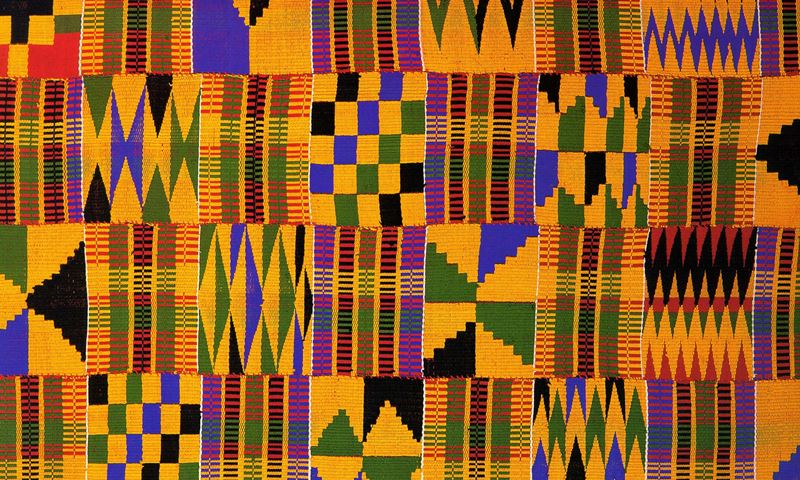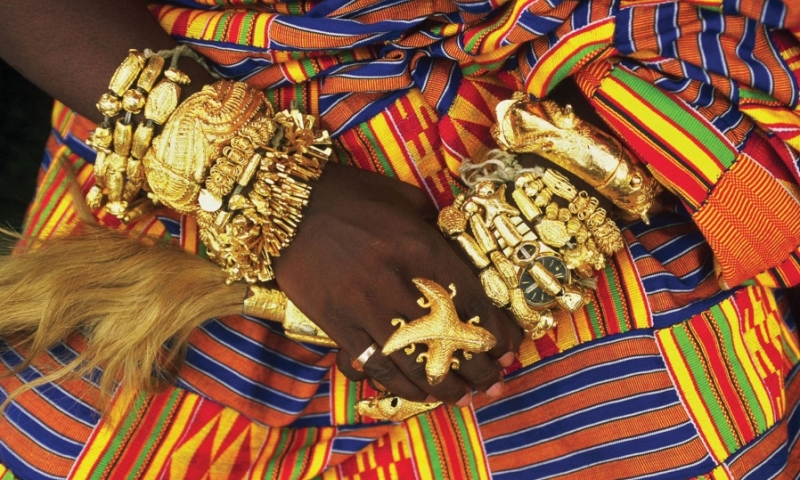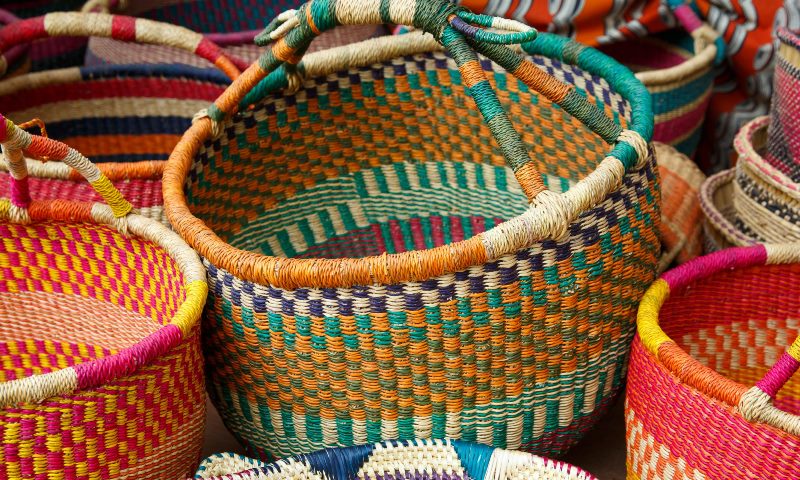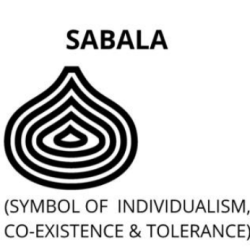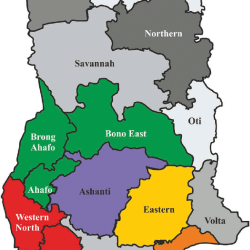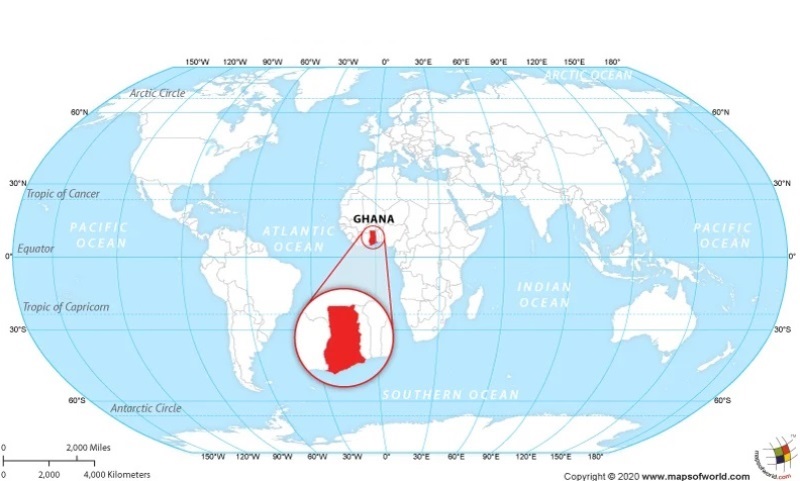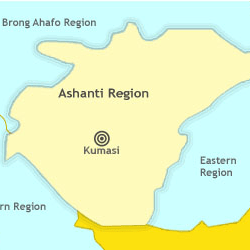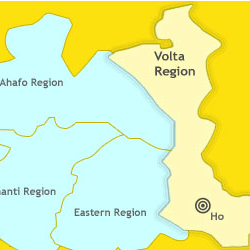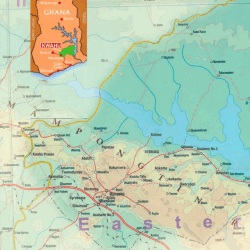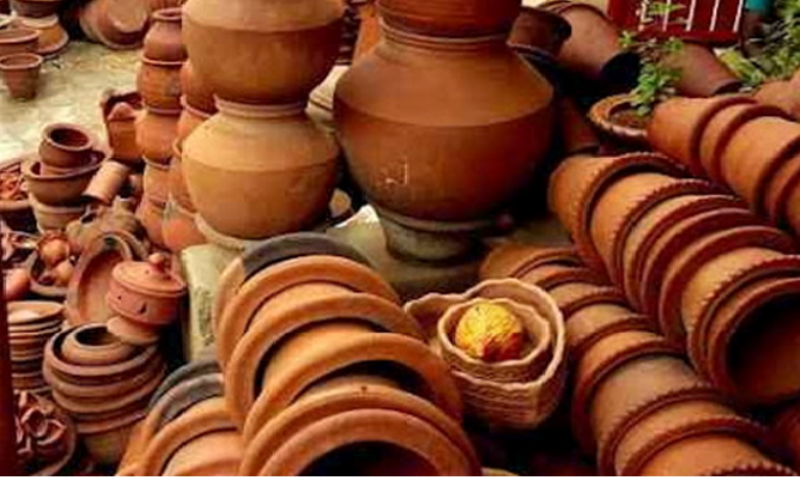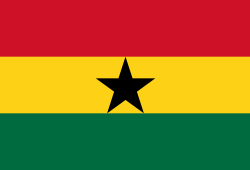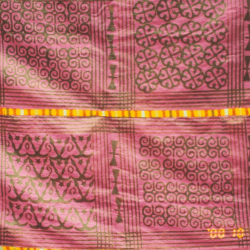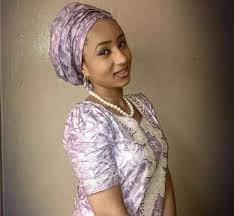How Ghanaians exhibit great craftsmanship in the weaving of traditional textile – Kente
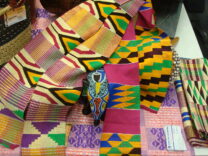
Communities: Bonwire, Adanwomase, Ntonso, Agotime – Kpeotoe Tafi and Agbozume
Regions: Ashanti and Volta Region

Kente weaving process in Ghana has a combination of knowledge, skills, artistic techniques and ideas with spiritual value and symbolism of the materials used and the product. Kente is a Ghanaian hand-woven textile from silk or cotton yarns.
The arrangements of patterns, as well as the finish cloths are named with proverbs, which reveal the thoughts, customs, norms and beliefs of these communities. In the communities, the color and design of the textile is determined by age, status and gender.
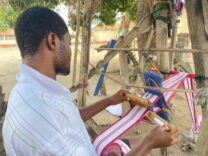
Products such as spun cottons, silk threads, dye yarns(usually cottons and rayons) are used to make kente strips using the West African Men’s horizontal, double/triple heddle loom which is composed of 13 pieces.

The weavers resist any modifications with any of the loom parts. The strips are woven together and it takes a period of 16 weeks to make a 12 yard piece of cloth. The art of making traditional textiles is a unique part of the Akan and Ewe speaking communities in Ghana. Kente is associated with royalty and to a large extent recognized as the national textile of Ghana.

On a large scale the Bonwire, Adanwomaso and Agotime Kpetoe are the most popular kente weaving communities in Ghana. The craft is predominated by males in these communities with fewer women participation as weavers.

There are many kente weaving groups within the rural cultural centers within the communities, and the skill of kente weaving among other arts and crafts is transmitted through identification, research, documentation, exhibitions in halls/museums during cultural/traditional festivals and artisans fairs.

Decorative kente products are used largely to decorate the interiors of modern living and public spaces in Ghana. Kente products are made into souvenirs in Ghana for foreign guests and tourists, and used to honor guests at special events.

Kente products are still largely used as part of the Ghanaian national costumes at national events, holidays, festivals, funerals and to an extent stage acts and performances
